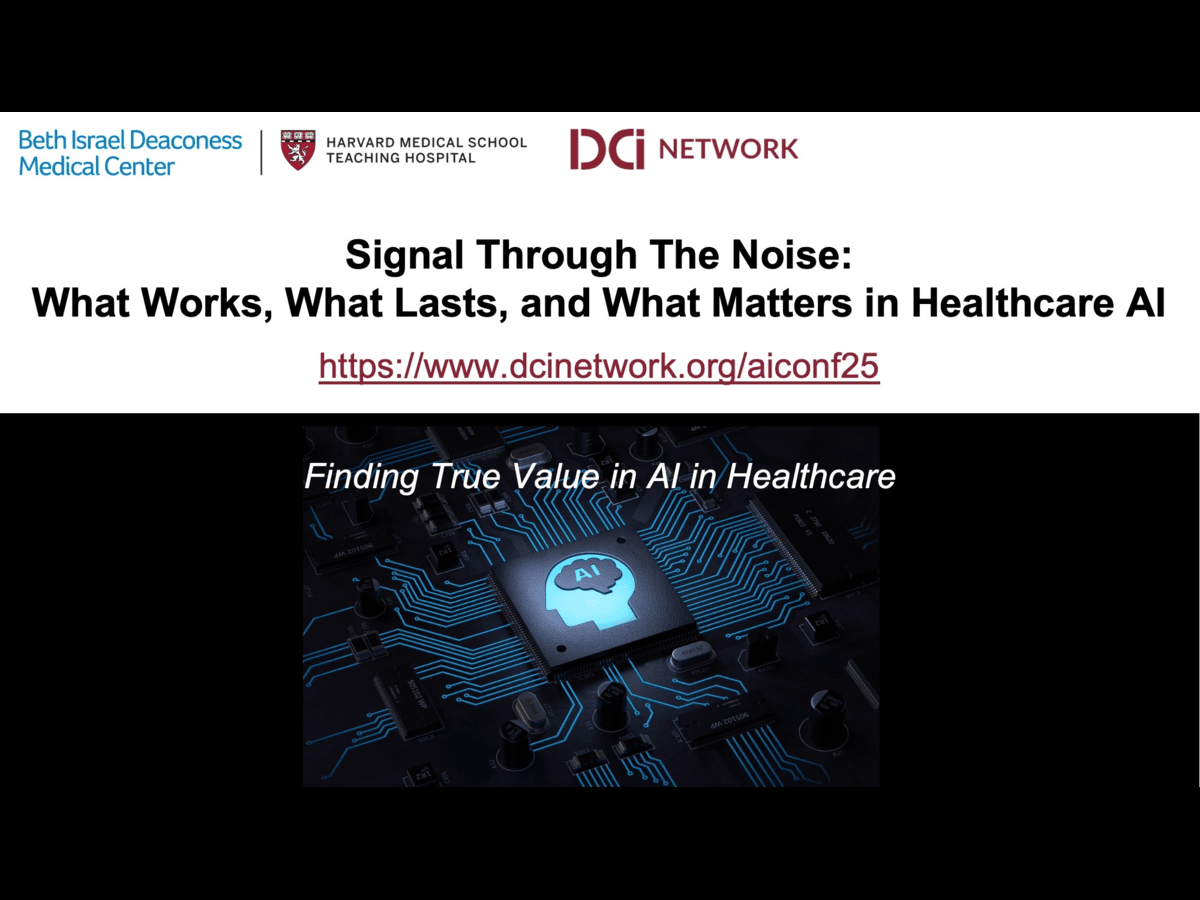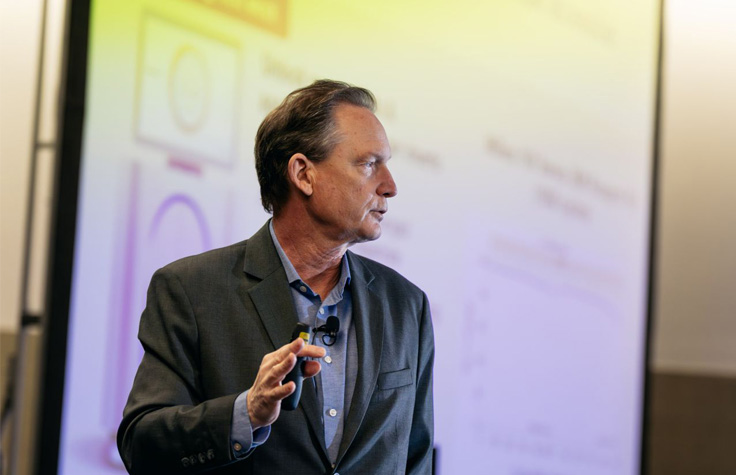By The ASCO Post Staff
Posted: 10/21/2025 11:00:00 AM
Last Updated:
Enzalutamide in combination with leuprolide demonstrated a significantly longer overall survival than either leuprolide or…
By The ASCO Post Staff
Posted: 10/21/2025 11:00:00 AM
Last Updated:
Enzalutamide in combination with leuprolide demonstrated a significantly longer overall survival than either leuprolide or…

Lenovo™ unveiled its new generation of ThinkCentre™ desktop next-gen AI PCs powered by AMD Ryzen™ AI 300 Series processors with up to 50 TOPS of integrated NPU capability: the streamlined ThinkCentre neo 55a Gen 6 all-in-one (AIO), the…

Key Takeaways
While the development of artificial intelligence (AI) continues to rapidly accelerate, successful adoption of AI tools in health care has lagged []. The technology has yet to fulfill its positive potential in this sector, and concerns about its negative potential are just beginning to be addressed [,]. In addition to sector-specific challenges, there are simply too many tools about which too little—especially when it comes to aspects like privacy, ethics, and patient safety—is known. The signal is obscured by a great deal of noise.
The Division of Clinical Informatics (DCI) Network hosted researchers, clinicians, tech innovators, patients, and patient advocates in Boston in September 2025 to filter out that noise and distinguish true value from hype. The conference—“Signal Through The Noise: What Works, What Lasts, and What Matters in Healthcare AI” []—touched on everything from new agentic AI tools to regulatory frameworks and highlighted key priorities for the use of AI in medicine, including:
Yuri Quintana, PhD, Chief of the DCI at the Beth Israel Deaconess Medical Center, Assistant Professor of Medicine at Harvard Medical School, and Senior Scientist at the Homewood Research Institute—along with fellow DCI Network colleagues Steven E Labkoff, MD, and Leon Rozenblit, JD, PhD—organized and chaired the 3-day event.
Having had the good fortune of attending the conference, I further connected with Dr Quintana via email to get his impressions and insights.
You’ve developed several apps that have effectively improved health care delivery []. Were there any major lessons from developing those apps that you think are relevant for the deployment of AI in health care and for this conference?
YQ: While AI promises new opportunities, it is essential not to lose past lessons learned on what works in successful digital health solutions. One of these is the need to develop patient-centric solutions through co-design with patients. Often, in the rush to introduce new technologies, patient involvement is overlooked or done as an afterthought. Successful solutions always include patients early, not only in development but also in the ongoing postmarket release of technologies.
You’ve talked about the problem of amplification without verification when it comes to AI in health care []. What do you think are the biggest obstacles or reservations industries and health care institutions have when it comes to building a “culture of verification”?
YQ: Verification is often viewed as a hindrance to innovation. However, verification is also essential in ensuring that solutions actually address the problem they are intended to solve. When properly done, verification enhances the product’s evolution toward consumer needs and market realities, preventing product failures. Additionally, failure in health care can lead to patient harm, making verification an essential part of AI in health care.
You’re bringing many different stakeholders together for this conference—what are you hoping the cross-talk will reveal or facilitate that siloed conversations often miss? Are there specific lessons you think different stakeholders can learn from one another?
YQ: We hope that the interactions between private sector and public sector groups will lead to a better understanding of how they can collaborate toward improved AI system development, evaluation, and regulation, ensuring better solutions with measurable outcomes and a valuable return on investment. There are numerous AI solutions with unclear outcomes or unquantifiable metrics of success.
What do you hope the real-world impact of this conference will be?
We hope the conference will not only help disseminate best practices in AI for health care but also lead to productive new collaborations among its members. Many new initiatives have arisen from our past conferences. We hope this trend of collaborative innovation continues.

What were the biggest takeaways from this conference for you? Were there any emerging best practices, systems, or frameworks that stood out as immediately relevant and/or scalable?
YQ: There was clear evidence that some groups are making meaningful strides toward improved approaches to measuring outcomes. Among those making the most measurable outcomes are applications that may seem mundane, but automating and improving mundane processes will lead to a more efficient health care system, freeing up staff to spend more time with patients.
Did anything you learned from the conference surprise you?
YQ: There was a very warm and welcoming reception to patient views, which led to more inspired conversations on how to bring patient centricity to AI. The delegates engaged with the patients throughout the entire conference. We hope to have more patients and patient advocacy groups at future conferences. We also had a diverse group of presenters, including start-ups, students, early-career investigators, and experienced researchers. This demonstrates that significant progress is being made across the range of stakeholders. A diverse panel of experts evaluated the contributed papers, and although we only selected the top submissions, it was evident that excellence was present across all sectors and age groups.
What gaps in the conversation do you think still need to be addressed in future events or publications?
YQ: There was a clear call for more transparency and for clearer ethics from AI developers. While ethical principles have been articulated, there are few examples of AI developers demonstrating how ethics were applied in the development and operation of their systems. More work needs to be done in these areas.
Coming out of this conference, how do you feel about the future of AI in health care?
YQ: I believe the advancements in hardware and software will continue to accelerate at a rapid pace. The ability for the AI community to develop AI responsively and transparently is yet to be seen. The current lack of transparency in many systems leaves a lot of work and incentives to be designed to bring transparency and trust to levels that most people want to see. Overall, I am optimistic that we will see more open discussions on these topics, leading to better evaluation and transparency of AI in health care.
For my part, as an attendee, the tone, aims, and implications of this conference can perhaps best be summed up with the following statement by Stephen Hawking [], quoted by one of the presenters: “Our future is a race between the growing power of technology and the wisdom with which we use it.”
JMIR Publications was one of the sponsors of the “Signal Through The Noise: What Works, What Lasts, and What Matters in Healthcare AI” conference. The sponsorship included waived conference registration fees for two attendees, including this article’s author.
© JMIR Publications. Originally published in the Journal of Medical Internet Research (https://www.jmir.org), 21.Oct.2025.

Many eye banks won’t accept corneas from donors with diabetes, concerned they might be harder to prepare for transplant surgery or are more likely to fail.
But a new study led by researchers at Case Western Reserve University and…

Unlock the Editor’s Digest for free
Roula Khalaf, Editor of the FT, selects her favourite stories in this weekly newsletter.
Television adaptations of popcorn thriller writer Harlan Coben’s extravagantly plotted novels, from Fool Me Once to The…


The Catan franchise may have taken the longest road to a Hollywood adaptation, but the hit board game has finally struck a deal to bring the iconic resource-management strategy game to the screen.
Netflix has won the rights to the…

When arranged in just the right ways, two-dimensional materials can display unusual and valuable quantum effects such as superconductivity and exotic types of magnetism. Understanding why these effects arise, and how to control them, remains one…

A newly developed method that improves the accuracy of ankle blood pressure measurements could transform care for people who are unable to have their blood pressure taken from the arm.
Researchers from the University of Exeter Medical School, in…

You can buy a smart ring to track your sleep activity or a smartwatch to monitor your heartbeat, so perhaps it makes sense that health tech’s next frontier has come for your toilet. Behold: Dekoda, Kohler’s new toilet cam. No, not that type…